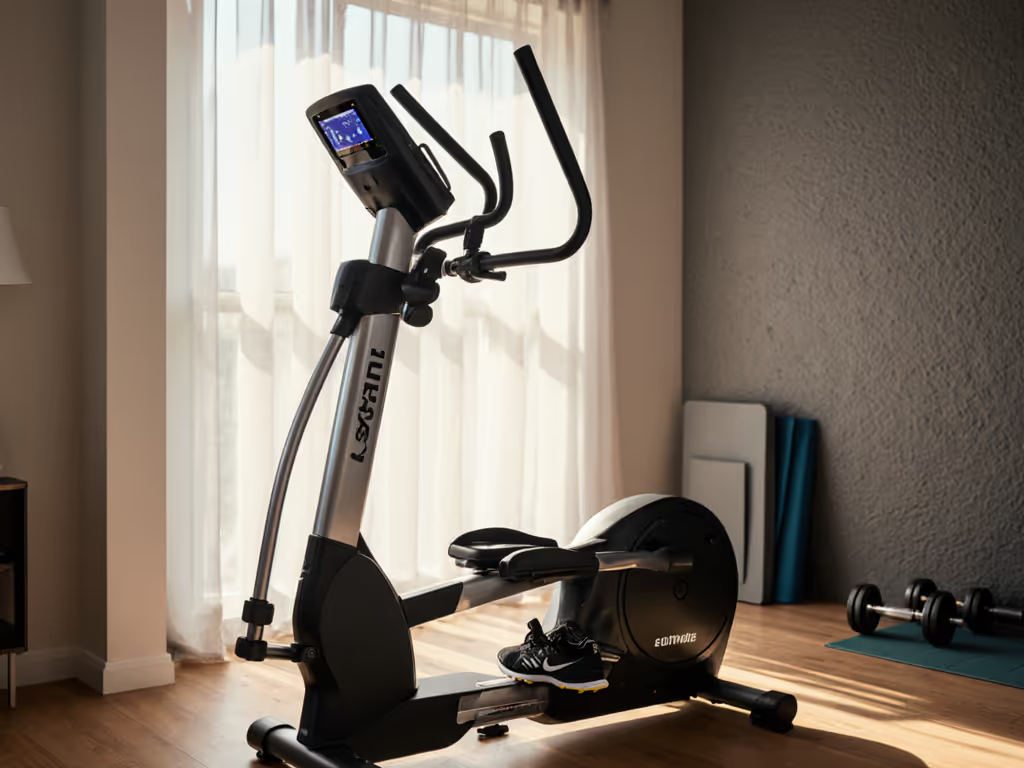
Compact Elliptical Guide: Fits Small Spaces, Your Stride Right
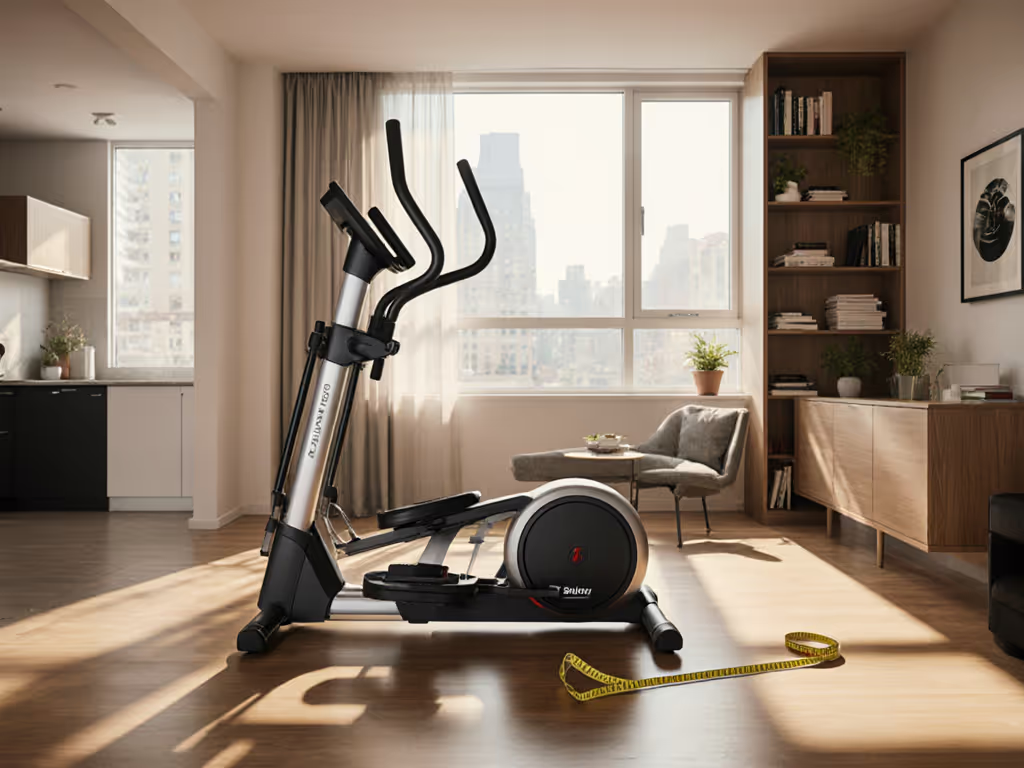
Finding the best compact elliptical for small spaces often feels like choosing between two bad options: a machine that fits your apartment but hurts your knees, or one that feels great but dominates your living room. As someone who taped my living room floor after winter knee twinges revealed I needed a 20-inch stride with a narrower Q-factor, I know this tension well. The truth is, a compact elliptical should adapt to your body, not the other way around. Measure your stride once; choose comfort for every workout.
Step 1: Your Body Measurements Before Square Footage
Most people measure their space first, then hunt for machines that fit the dimensions. This backwards approach explains why so many compact ellipticals end up as expensive clothes racks. Your biomechanics should dictate your machine selection, not the other way around.
The Wall-to-Toe Test (60 Seconds)
- Stand with your back against a wall, feet shoulder-width apart
- Step forward with your right foot, extending as far as feels natural
- Measure the distance from the wall to your right toe (in inches)
This number is your minimum stride length requirement. For example:
- Below 16": You likely need a machine with 16" or shorter stride
- 16"-18": Target 18"-20" stride machines
- Above 18": Look for models offering 20"+ stride
A machine with a stride shorter than your natural extension forces your hips into unnatural rotation. If it hurts, it's wrong. I've seen runners with 32-inch inseams struggling on 14-inch stride machines, essentially trying to run in toddler shoes.
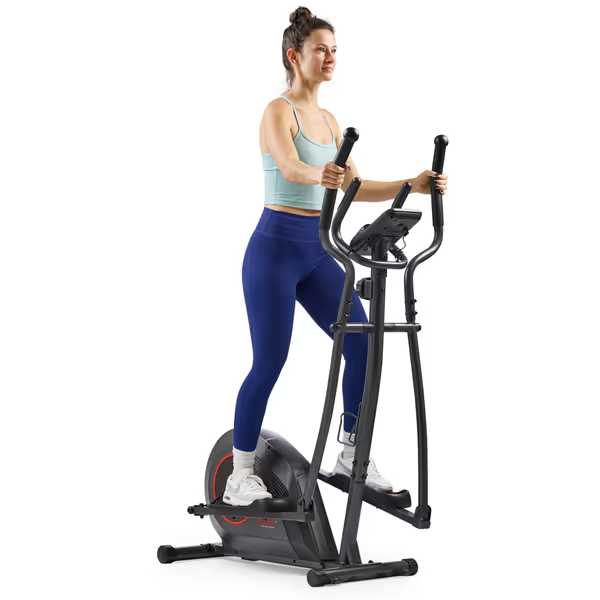
Sunny Health & Fitness Smart Upright Elliptical
Step 2: Q-Factor: The Hidden Knee Killer
Q-factor (the distance between pedal centers) is rarely mentioned in marketing materials but critical for joint comfort. Commercial elliptical machines often have Q-factors around 300mm, but that's too wide for most home users.
The Chair Test (30 Seconds)
- Sit in a dining chair with feet flat on the floor
- Position your feet as if pedaling a bicycle
- Measure the distance between your ankle bones
This measurement is your ideal Q-factor threshold. Most adults fall between 220-250mm. Machines exceeding 280mm Q-factor create lateral knee stress that builds over time.
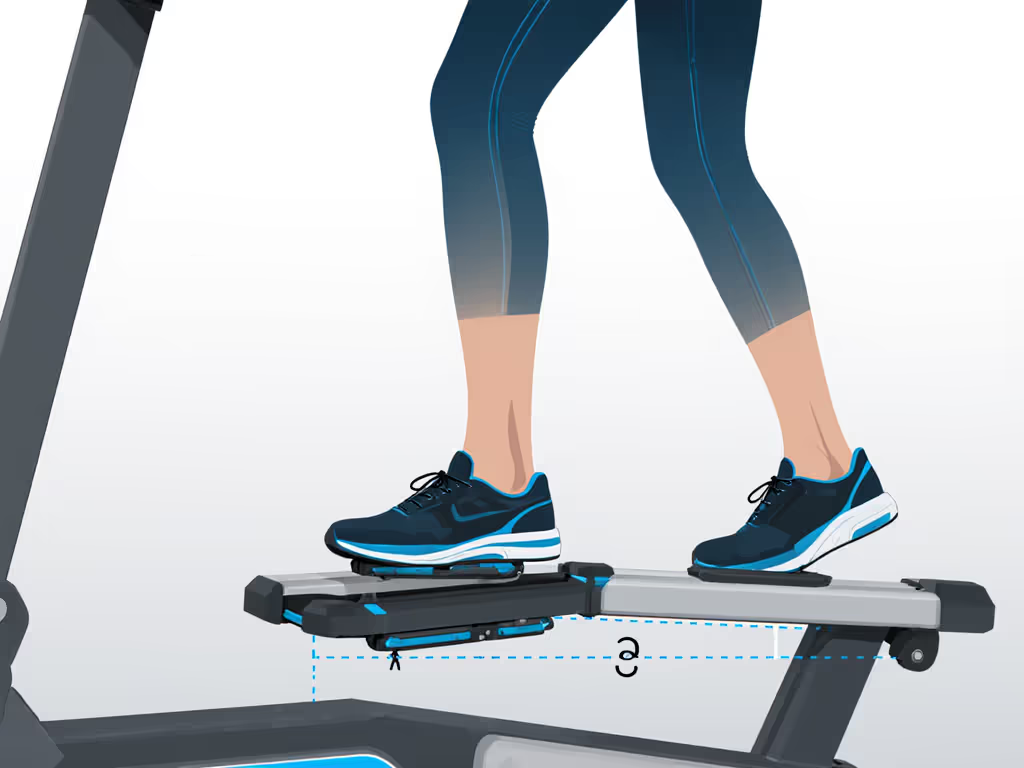
Measure your stride once; choose comfort for every workout.
Watch for red flags:
- Pedals that angle sharply outward
- Stride paths that feel like you're pedaling a bicycle sideways
- Knees that track inward during the power phase
The Sunny Health & Fitness Smart Upright (SF-E324005) offers a 240mm Q-factor, right in the sweet spot for most users. At 25.6" wide with a 12" stride, it's among the few compact elliptical options that balance space efficiency with biomechanical sensibility. Its magnetic resistance provides consistent feel across all 16 levels, crucial for maintaining proper form when fatigue sets in.
Step 3: Stride Path Analysis: Vertical vs. Horizontal Motion
Compact ellipticals often compensate for shorter footprints by increasing vertical motion, which creates its own problems. Too much up-and-down movement stresses knees, while insufficient horizontal travel feels choppy. To understand how drive mechanisms influence stride feel and space requirements, see our drive type comparison.
The Paper Trail Test (5 Minutes)
- Tape a large sheet of paper to your floor
- Stand barefoot and trace your outline in running stance
- From your natural stride position, draw an oval representing your foot path
Compare your oval to manufacturer stride diagrams. Your natural path should match the machine's motion profile within 10%. Compact ellipticals with overly circular paths force unnatural ankle rotation.
The Cubii Total Body V2 takes a different approach as an under-desk option. At just 22.2" deep, it fits where most best compact elliptical for small spaces options can't (under your desk). With a 12" stride and 12 resistance levels, it's ideal for seated, low-impact movement. But its smaller stride makes it better for supplemental movement than primary cardio unless you have a sub-27-inch inseam. Its 190mm Q-factor keeps knees tracking cleanly.
Step 4: Space Planning That Respects Your Biomechanics
Now that you know your body's requirements, measure your space with precision. Don't just check the machine's footprint; account for:
- Step-up height (critical for basements with 8-foot ceilings)
- Clearance behind handles for full arm extension
- Swing radius for moving parts (often overlooked in specs)
Create a life-size outline on your floor using painter's tape. Walk through your intended workout space, do you bump into furniture during full extension? Can you safely step on/off without tripping?
For true space efficiency, consider these metrics:
- Folded depth under 30" (for closet storage)
- Step-up height under 8" (for basement clearance)
- Front transport wheels over 3" diameter (for moving across thresholds)
The best foldable elliptical trainer balances these factors without compromising stride. Look for models where the folded footprint matches your seated TV-watching zone (most people assemble these once and never move them again).
Step 5: Multi-User Compatibility Checklist
Households with partners of different heights face unique challenges. Rather than buying two machines, look for:
- Adjustable stride length (minimum 2" range)
- Q-factor within 20mm of both users' ideal measurements
- Handle height adjustability (at least 4" range)
- Preset programs that remember individual metrics
For example, if one partner has 28" inseam (ideal 18" stride) and the other has 34" inseam (22" stride), a machine with 18"-22" adjustable stride would work. Few compact models offer this, as most have fixed stride lengths. The Sunny Health & Fitness model locks at 12", making it better for users under 5'9".
Your Action Plan: From Measurement to Movement
- Complete your biometric assessments using the wall-to-toe and chair tests
- Map your space with painter's tape using actual machine dimensions
- Shortlist models that meet your stride and Q-factor thresholds
- Check return policies (reputable brands offer 30-day home trials)
- Test before buying if possible (visit showrooms on weekdays when less crowded)
Don't let space constraints force you into biomechanical compromise. The right best home gym elliptical adapts to your body while respecting your square footage. Machines with fixed, short strides under 16" simply cannot accommodate average-height adults without knee strain.
When shopping, prioritize these non-negotiables:
- Stride length matching your wall-to-toe measurement
- Q-factor within 20mm of your chair test result
- Smooth resistance curve across all levels (no sudden jumps)
- Step-up height allowing full extension without headroom issues
If it hurts, it's wrong. Period. Your elliptical should feel like an extension of your natural movement, not a puzzle to solve with each workout. Start with measurements, not marketing claims, and you'll find the compact elliptical that fits both your space and your stride.
Related Articles

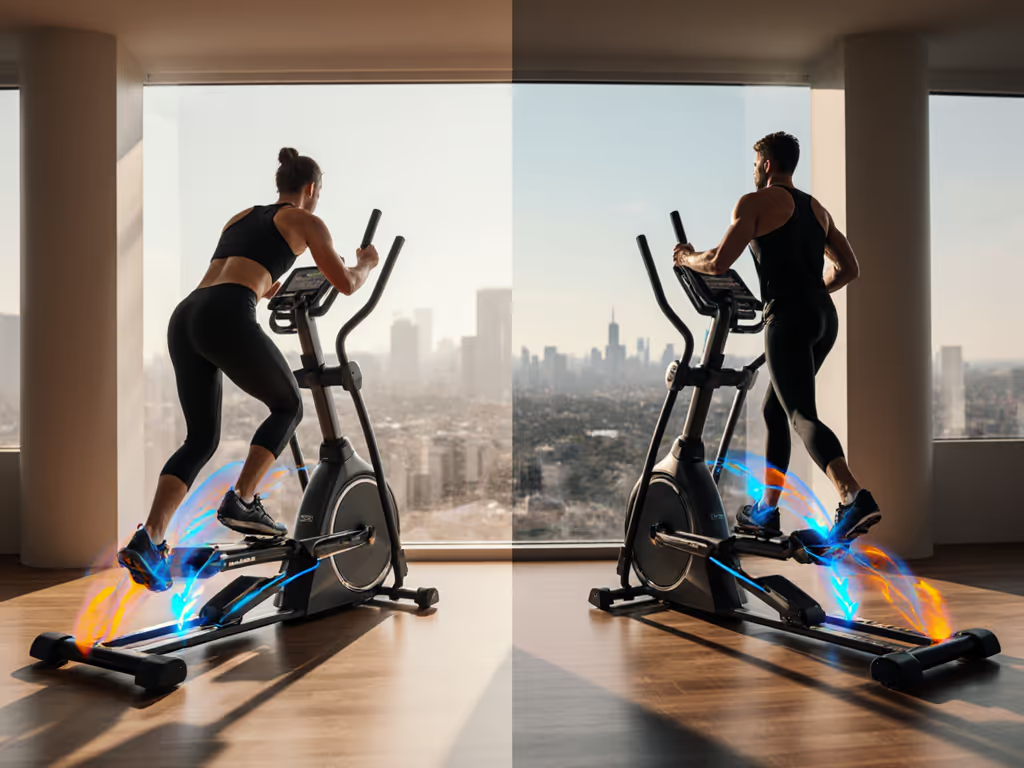
Front Drive vs Rear Drive Elliptical: Which Fits Your Stride?
Understand how front, rear, and center-drive ellipticals differ in stride feel, joint comfort, noise, and space. Apply simple measurements and connectivity checks - inseam-based stride length, ceiling clearance, and BLE FTMS support - to pick a machine that fits your body and home without locking your training data behind a subscription.
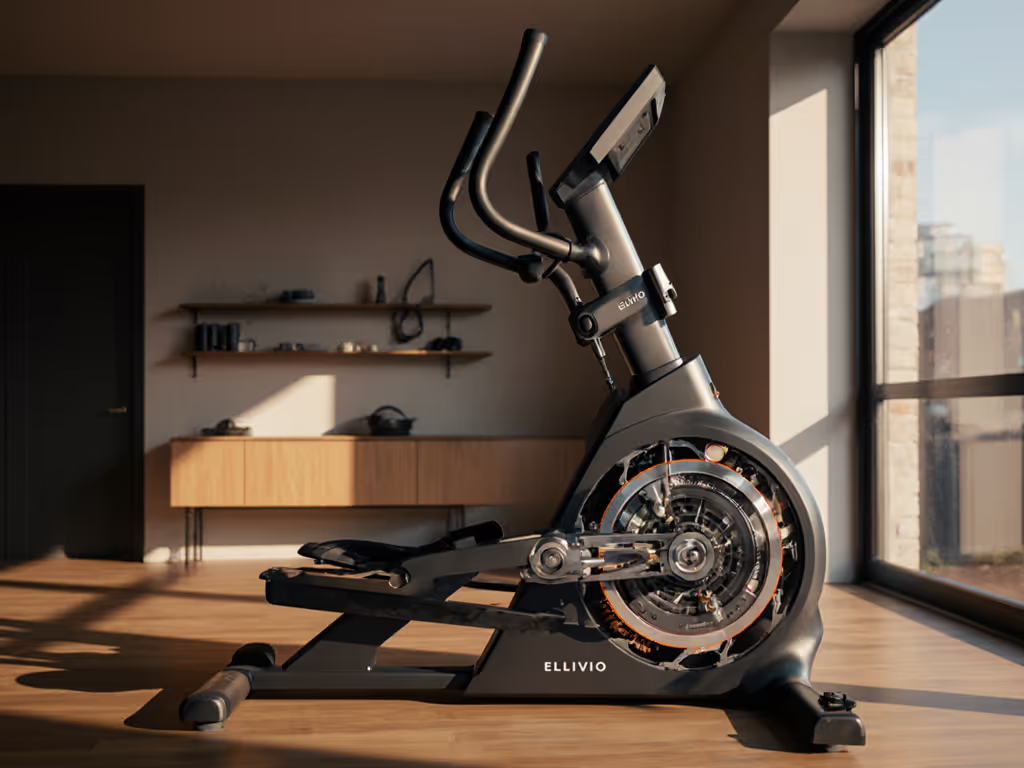
Elliptical Machine Types: Avoid Short-Term Cost Failures
Cut through marketing and choose an elliptical that lasts by prioritizing drive type, robust components, realistic warranties, and true cost‑per‑reliable‑workout over flashy features. Use the simple heat test and 5‑year survival checklist to spot hidden failure points and subscription traps before you buy.
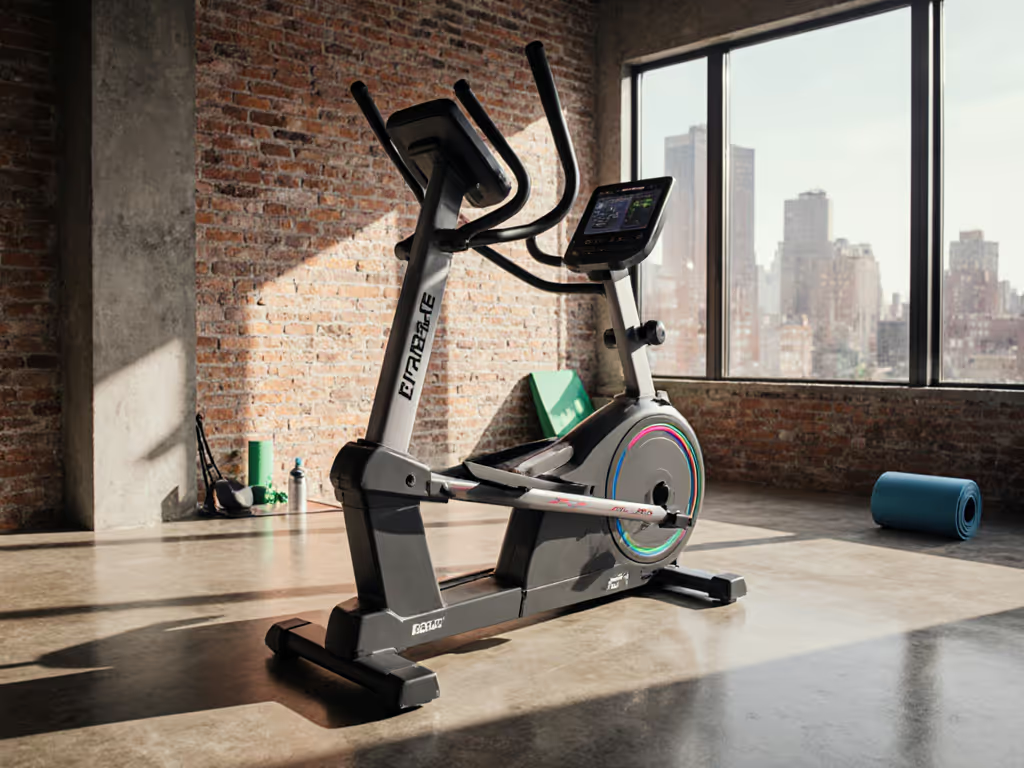
Commercial Elliptical Machines: Home Gym Reality Check
Choose a commercial elliptical that truly fits your body, space, and tech. Get stride-length sizing, drive-type guidance, apartment-friendly noise and stability fixes, open-standards app tips, and a practical checklist for durability, maintenance, and warranties.
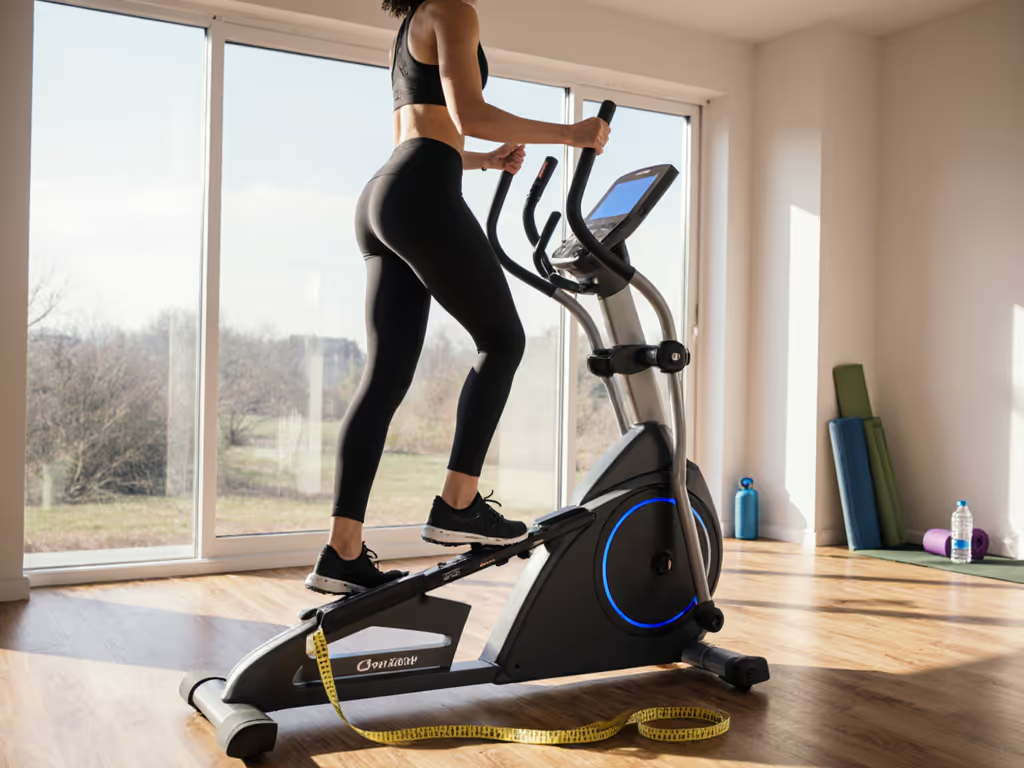
Best Ellipticals for Tall People: Stride Length Guide
Calculate the right stride length for a tall frame using your inseam (×0.22), then vet Q‑factor, handle reach, step-up height, and ceiling clearance for comfortable, consistent workouts. Includes guidance on adjustable stride for multi-user homes and simple at‑home tests to confirm fit.
